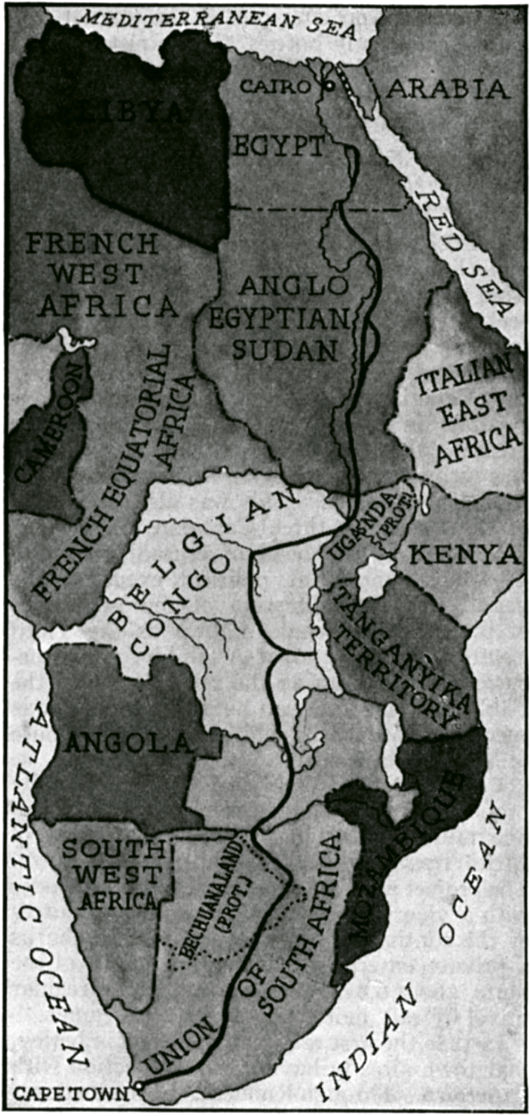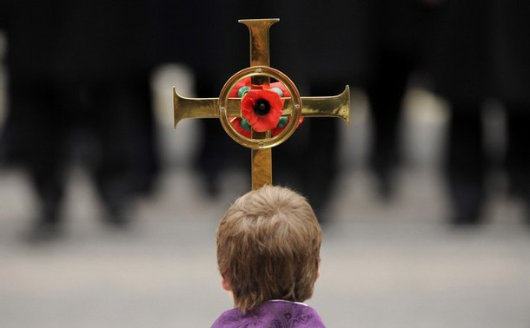Tradition
About Andrew Cusack
 Writer, web designer, etc.; born in New York; educated in Argentina, Scotland, and South Africa; now based in London.
Writer, web designer, etc.; born in New York; educated in Argentina, Scotland, and South Africa; now based in London. read more
News
Blogs
Reviews & Periodicals
Arts & Design
World
France
Mitteleuropa
Knickerbockers
Argentina
The Levant
Africa
Cape of Good Hope
Netherlands
Scandinavia
Québec
India
Muscovy
Germany
Academica
The arms of the Hon. Paul Comtois
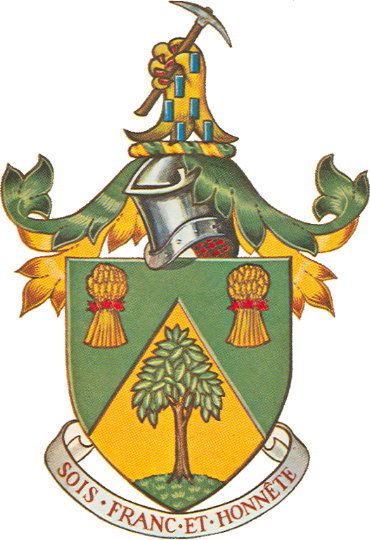
Our friend Mr. Bruce Patterson, who is St-Laurent Herald up in the Canadian Heraldic Authority, was kind enough to send along this rendering of the arms of the Hon. Paul Comtois from Beddoe’s Canadian Heraldry. As Bruce points out, the garbs probably refer to Comtois’s agricultural background, and the miner’s pick in the crest alludes to his ministerial portfolio. The motto is “Be frank & honest”.
Paul Comtois of Québec
Farmer, Politician, Hero, Saint

FROM TIME TO TIME there are men in history whose heroism runs so counter to the spirit of the age that the arbiters of passing fashion must simply ignore him rather than run the risk of acknowledging his embarrassing greatness and goodness. God has graced the New World with many of His saints, some of whom — Rose of Lima, Martin de Porres, Mother Seton — have already been raised to the altar, others — Fulton Sheen, Fr. Solanus Casey — are certainly on their way. Yet more remain unsung and almost forgotten: Paul Comtois (1895–1966), Lieutenant-Governor of Québec until his heroic death, is just one of these saints.
Count von Stauffenberg: “We Live in a Society of Lemmings”
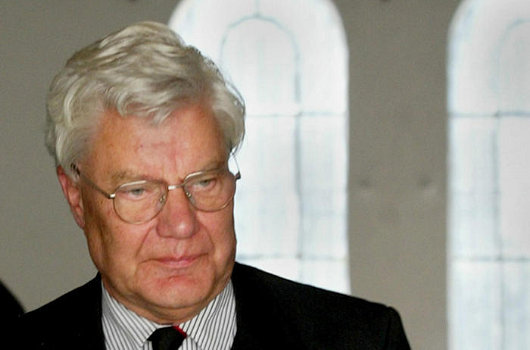
Count Franz Ludwig von Stauffenberg, the third son of Hitler’s would-be assassin Count Claus von Stauffenberg and brother to Gen. Berthold von Stauffenberg, recently spoke to the German magazine FOCUS about Germany’s ratification of the Lisbon Treaty. Stauffenberg, a father of four and grandfather of eight, has spent his life as an attorney and a politician for the Bavarian Christian Social Union party, serving in the Bundestag from 1976 to 1987 and as a Member of the European Parliament from 1984 to 1992.
FOCUS asked the Count about his participation in the German court challenge against the Lisbon Treaty.
“I see the way to [the Constitutional Court] as a last resort,” the Count said, “and had hoped that we could compel a re-think through an ordinary democratic manner, through argument, debate, and public pressure. This has totally failed. I’m not anti-European; I was long enough a CSU Member of the European Parliament. This Europe is no longer compatible with the basic structures of a democratic legal state.”
FOCUS: Has your case something to do with your experience as the son of the resistance fighter Count von Stauffenberg?
“No. My father expected that his children would … stand on their own as a man or woman. I didn’t go into politics from devout worship of my father, but because of the unsuccessful paths of my peers from the generation of 1968.”
FOCUS: Your action comes late. Why have you waited so long?
“In Brussels, there was no sudden seizure of power, but a systematic, persistent development, in which the Bundestag deputies, constantly obedient and even docile, incapacitated themselves. They see themselves as a reserve team for higher office rather than in their actual role as inspectors to reflect, as a counter force on equal footing.”
FOCUS: How can it be that so few see a risk in the Lisbon Treaty, and the rest should be so beaten with blindness?
“In Germany, almost no one wanted to hear concerns. We live in a society of lemmings.”
Link: Graf Stauffenberg: “Wir leben in einer Gesellschaft von Lemmingen” (In German)
A new bookplate for the NYG&B
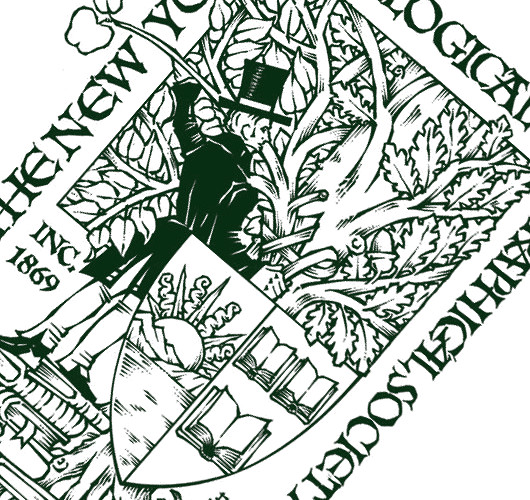
Fr. Guy Selvester reports on his resurrected Shouts in the Piazza blog that the great Marco Foppoli has designed a new bookplate for the New York Genealogical & Biographical Society. Mr. Foppoli is the most highly-regarded heraldic artist of our day, and the influence of the style of his mentor, the late Archbishop Bruno Heim, is apparent in his work.
Eric Seddon on Washington Irving
Alongside Miklos Banffy, Washington Irving is probably my favourite author. I have two sets of his complete works, and will obtain at least a third — my favourite printing of the complete Irving, in an excellent handy size — when I can find it for the right price. It is curious, but by no means suprising, that Irving’s genius is nearly forgotten today even though he was the first American to be an international superstar, famed on both sides of the Atlantic. He is mostly known only through his authorship of Rip van Winkel and The Legend of Sleepy Hollow, both of which works are rarely presented in their original written form, but almost always in shortened illustrated versions for schoolchildren from publishers convinced of their audience’s stupidity.
Irving is rarely in the limelight these days, but First Things Online recently published an informative article, “Washington Irving and the Specter of Cultural Continuity” by one Eric Seddon, that is well worth reading.
His first book, Dietrich Knickerbocker’s History of New York, capitalized on the amnesia of New Yorkers by a mix of biting satire and real history of the Dutch reign in Manhattan. The book is foundational to any study in American humor. It is wild, free, self-deprecatory, and merciless to the public figures of his day, and by turns lyrically funny, absurd, and reflective. Without it, we might wonder whether American humor, from Twain to the Marx brothers to Seinfeld, would have taken the particular shape it did.
When Americans, always prone to utopian daydreams, were in danger of taking themselves far too seriously, when the term “manifest destiny” was embryonic, Dietrich Knickerbocker rolled his bugged-out eyes, chuckled gruffly, and whispered into the ear of a young nation, “Remember thou art mortal.” […]
Irving’s two most famous stories are to be found in The Sketch Book, virtually bookending the text: “Rip Van Winkle” and “The Legend of Sleepy Hollow.” In “Rip Van Winkle,” Irving whimsically pointed out the hazards of the new Republic, that a once humble acceptance of life under monarchy could easily give way to arrogant corruption, vice, and the nauseating specter of being governed by village idiots with a gift for demagoguery. […]
The final warning of the book comes in the form of a Headless Horseman, who is either a real ghost of the Revolution or the town bully in disguise, and who targets, of all people, the schoolmaster (even small towns have their intelligentsia). Is it history chasing Icabod Crane, the puritanical teacher obsessed with stories of witch hunts, or just Brom Bones scaring him out of town? Irving doesn’t say, and perhaps our answers tell more about ourselves than about him.
Washington Irving spent his last days in Tarrytown, near the setting of his most famous story. He was a member of the local Episcopal Church, tried to revive the old Dutch festivities on St. Nicholas Day, and was moved to tears by singing the Gloria. In particular he loved to repeat the words “Glory to God in the highest, and on earth peace, and good-will to men.” Though his era was in many ways a bigoted one, he resisted and thereby helped to shape a better future. One of his last revisions to Knickerbocker came late, removing the anti-Catholic references its youthful version contained. He was a man who had seen his share of specters, to be sure, but who didn’t believe they were the strongest reality.
Debating Stauffenberg
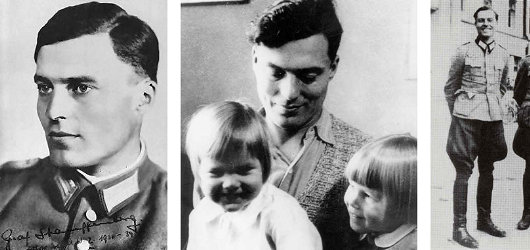
The recent release of the Hollywood film “Valkyrie” has brought the July ’44 plot back into the limelight. Much debate has focussed on the central figure of Count von Stauffenberg, especially the motivation and inspiration for his attempt to overthrow the Nazi regime. Writing in Süddeutsche Zeitung, Richard Evans (Regius Professor of Modern History at Cambridge) asks “Why did Stauffenberg plant the bomb?” Prof. Evans argues that the Count’s contempt for liberalism combined with his (Stefan George-influenced) romantic nostalgia « make him ill-fitted to serve as a model for the conduct and ideas of future generations » .
A week later, the Süddeutsche Zeitung published “Unmasking the July 20 plot“, a response to Evans by Karl Heinz Bohrer, the publisher of Merkur and a visiting professor at Stanford. Bohrer counters Evans on two fronts. « Firstly Evans’s lesson consisted of historical half truths, contradictory theses and slanderous allusions to Stauffenberg’s character; and secondly, such distortions differ very little from the view held by West German intelligentsia regarding the events of July 20th 1944 and the conspirators who were, for the most part, of aristocratic Prussian stock. … For a proper understanding of the how the plot against Hitler of 1944 is seen and judged today, one should bear in mind that today’s horizon has shifted. »
« There is no question that like Ernst Jünger and Gottfried Benn, Stauffenberg’s first spiritual influence, Stefan George, entertained pre-fascist fantasies. And there is also no question that the young Stauffenberg’s reverence for the medieval ‘reich’ was reactionary – in a similar vein to Novalis’s ideas in ‘Die Christenheit oder Europa’. But what does that mean? Neither of them had political ideas that could in any way have served as a model for democratic European societies in the second half of the twentieth century. But to fundamentalise this tautological insight to effectively deny the conspirators any moral or cultural relevance is blinkered and constitutes intellectual bigotry. George, Jünger and Benn’s pre-fascist fantasies contained important modernist symbols which mean they cannot be judged by political moralist criteria, alone. The same goes for Stauffenberg and his friends who – in a different way to the “idealistic” Scholl siblings and their circle – represented a calibre of ethics, character and culture class of which today’s politicians and other bureaucratic elites can only dream. »
In that same week, Bernard-Henri Lévy — the omnipresent French man of letters — waddled into the debate with “Beyond the war hero” in the pages of Le Point. BHL proclaims the release of “Valkyrie” is unquestionably good, for it is inherently good for the world to honour its heroes. « Riveting as it is however, this film poses certain questions that are too complex and too delicate to be resolved solely within the logic of the Hollywood film industry. »
In a moment of pure irony, Lévy attacks the lack of accuracy in the film while making a gross historical error himself. The philosopher asks whether « raising someone to hero status does not always happen, alas, to the detriment of precision, nuance and history itself. The film shows Stauffenberg’s integrity very well. It shows his courage, the nobility of his views, his firmness of spirit. But what does it tell us of his thoughts? What does it teach us about why he enthusiastically joined the Nazi Party in 1933? » In actual fact, while Stauffenberg’s family members were concerned that he was “turning brown” the Count never joined the Nazi Party; not in 1933, not ever.
In a sense, Lévy has answered his own question in that Stauffenberg’s elevation has apparently taken place to the detriment of precision and history in that Lévy is apparently unaware of quite central historical facts of the case.
Previously: Stauffenberg
First Troop, Philadelphia City Cavalry
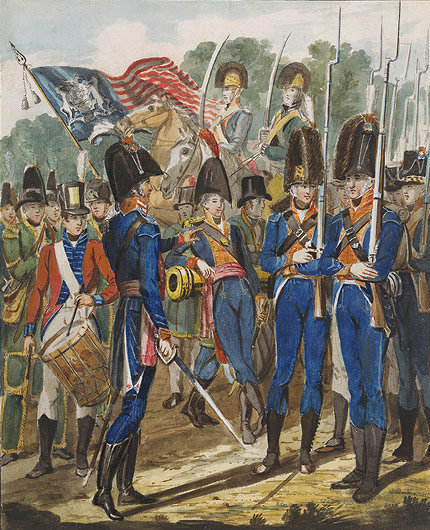
Watercolor, gouache, and graphite on white laid paper, 9 in. x 7 1/4 in.
c. 1811-1813, Rogers Fund
Previously: The Prince of Wales in Philadelphia
The Victory Parade, Dublin 1919
UPDATED Peter Henry’s article from Trinity News corrects my errors.
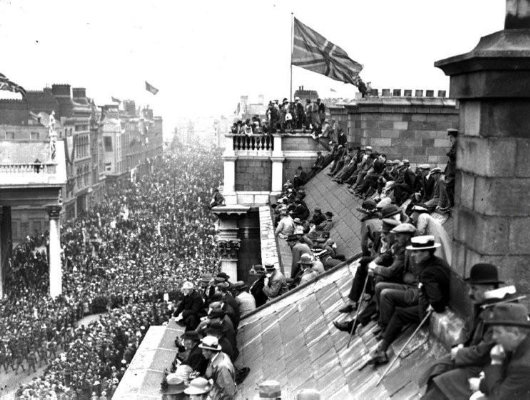
Persuant to our previous photograph of the Union Jack proudly snapping from Dublin’s General Post Office, one of our dear friends & loyal readers, a former editor of Trinity College’s newspaper, sends this photo of the 1919 Victory Parade through the streets of Dublin after the end of the Great War. The red, white, and blue here flies from the top of Trinity College, and the view looks down D’Olier Street (if I recall correctly) towards O’Connell Street in the distance. The classical portico on the left marks the entrance to the Irish House of Lords.
It is worth remembering that a great deal more Irish served in the forces of the Crown than in any republican armed forces or groups. The memory of Ireland’s great sacrifice during the First World War was shamefully neglected from the 1930s until about ten or fifteen years ago. It was a pity that the famous old Irish regiments were disbanded when independence came in 1921, rather than being continued under a native Irish command. Gone the Connaught Rangers and Dublin Fusiliers, and all the great battle honours won by Irishmen from Waterloo to far off India. (Two Irish regiments still exist in the British Army, the Royal Irish and the Irish Guards). Still, in remembrance of the dead of the First World War, one can visit the War Memorial Gardens by the banks of the Liffey, beautifully designed by Lutyens and completed after independence. The cost was split between the Irish and British governments, and, in the post-war downturn, half the workers were Irish veterans of the British Army and half were veterans of the formerly rebel forces.
Ireland remained neutral during the Second World War but declared a state of emergency, which is why the time of the war is often known in Ireland as “the Emergency”. Allied and Axis soldiers who washed up or crash-landed in Ireland found themselves interned in camps, but the Irish soldiers guarding them were only armed with blank ammunition. (Allied internees were often allowed to escape). The law of the day forbade any Irish citizen from joining a foreign military, but many soldiers of the Irish Army, policemen of an Garda Siochana, and many Irish civilians left for Britain to join the Allies in the fight, and were not punished on their return. When the port of Belfast suffered a German bombardment, fire brigades from Dundalk to Dublin were sent north irrespective of the border in order to help quell the flames.
Returning to Trinity, flying the Union Jack in 1919 would not have proved controversial in the slightest (after all, it was still the official flag of the land), but the crowds gathered again on College Green in 1945 to spontaneously celebrate the news of Germany’s surrender. The flag of Ireland with those of all the Allied nations were flown from the flagpole of Trinity, but some tactless student had placed the Union Jack at the top and the Irish Tricolour at the very bottom, below even the Soviet hammer-and-sickle. The crowd noticed this and began to howl, but some more thoughtful Trinity man swiftly took the colours down and raised them again with the Tricolour to the fore. The joyful spirit resumed.
Chigi
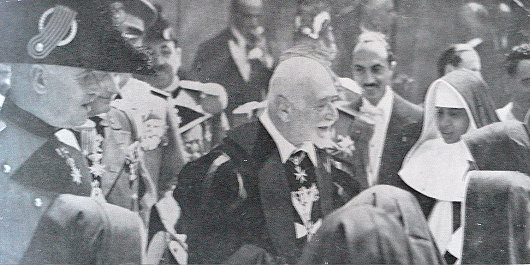
This is my favourite photo of Ludovico Chigi della Rovere Albani (Prince & Grand Master of the Order of Malta, Prince of the Holy Roman Empire, 8th Prince of Farnese and Campagnano, 4th Prince of Soriano, 8th Duke of Ariccia and of Formello, Marquess of Magliana Pecorareci, Hereditary Marshall of the Holy Roman Church and Guardian of the Conclave) who oversaw the rebuilding of Monte Cassino. Here, he distributes prizes to medical students at the International Missionary School of Medicine and Surgery.
The Prime Minister & His Wife
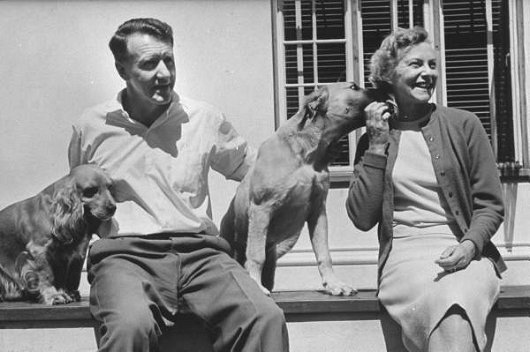
The Rt Hon Ian Douglas Smith & Mrs Smith, at home in Salisbury, Rhodesia.
‘German’ Poland vs. ‘Russian’ Poland
A curiosity of the 2007 Polish parliamentary election
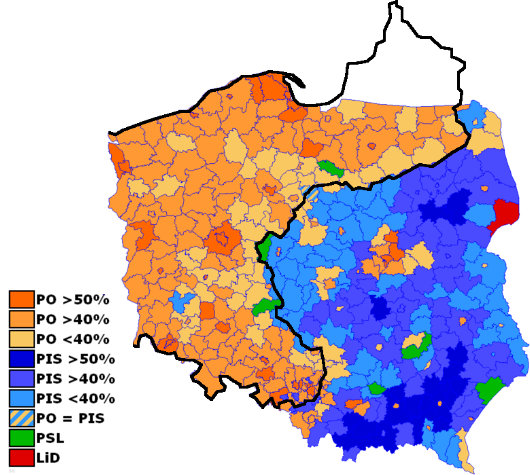
THIS MAP displaying the results of the 2007 general election for the Polish parliament is overlaid with an outline of the nineteenth-century border between the German and Russian empires.
The areas formerly ruled by the German Kaiser tend to back the right-wing liberal Platforma Obywatelska (“Civic Platform”) party, while those formerly ruled by the Tsar tend to support the conservative Prawo i Sprawiedliwość (“Law and Justice”) party.
The green represents the centrist-agrarian Polish People’s Party, while the dark red represents the already-defunct “Left and Democrats” coalition.
Source: Strange Maps
The Dering Roll
College of Arms Foundation
&
The
Committee on Heraldry
of the
New York Genealogical & Biographical Society
cordially invite you to a talk by
MARIA DERING
on
THE DERING ROLL
Wednesday 14 January 2009
at
6:00 PM
The Portrait Gallery
No. 122 East 58th Street
Between Park & Lexington Avenues
In August 2008, the British Library acquired ownership of the Dering Roll, the oldest-surviving English roll of arms. The illuminated parchment dates from c. 1270-1280 and is a vital documentary record for the study of knighthood in medieval England. It contains 324 coats of arms arranged in 54 rows, with six shields assigned to each line.
Maria Dering, a member of the G&B’s Committee on Heraldry, will present an illustrated talk about the Dering Roll, its history, and the public campaign to keep it in the United Kingdom after it was bought by a foreign collector.
Admission charge of $20 (cash or check) includes a wine and cheese reception.
To reserve, please email John Shannon at john.shannon@coaf.us.
Remembering the Seventh
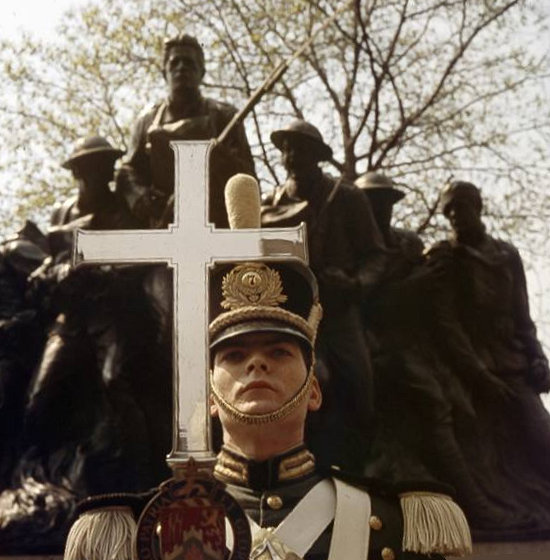
It is entirely appropriate that November 11 — Armistice Day — both falls during the month of the Holy Souls and on the feast of St. Martin of Tours. It’s not unlikely that the souls in Purgatory added their voices to plead for peace that November of 1918, and St. Martin, who had himself been a Roman soldier, was no doubt leading the cause from Heaven. (Indeed, his father having been in the Imperial Horse Guards, St. Martin was born into a military family).
God and the Emperor
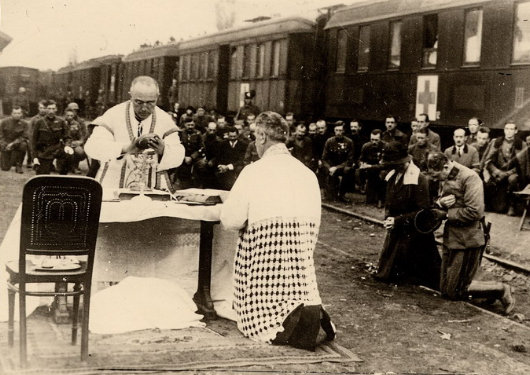
The Pester Lloyd
The Hungarian capital’s German-language newspaper has been “independent, pluralistic, steeped in tradition” since 1854
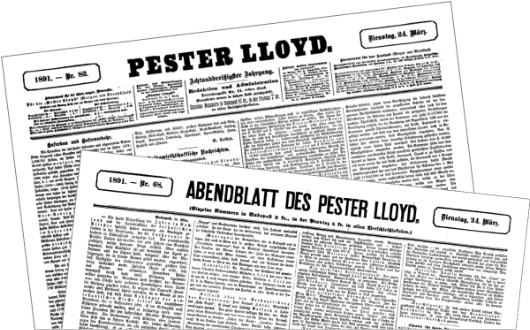
The fall of the Iron Curtain nearly twenty years ago after a half-century of Communist domination in Eastern Europe afforded an opportunity to revive many of the traditions and institutions which — while they had survived monarchy, republicanism, and fascism — were annihilated by the all-consuming Red totalitarianism. One such institution that has risen from the ashes is Hungary’s once-revered German-language newspaper, the Pester Lloyd.
 First appearing in 1854, when Buda and Pest were still two cities flanking the banks of the Danube, the Pester Lloyd was the leading German journal in Hungary. Printed daily with morning and evening editions, the “Pester” in the paper’s name refers to Pest, while “Lloyd” is in imitation of Lloyd’s List (the London shipping & commercial newspaper founded in 1692 by the eponymous properitor of Lloyd’s Coffee Shop and still going strong today). The paper first gained prominence under the editorial leadership of Dr. Miksa (Max) Falk, who had famously tutored the Empress Elisabeth in Hungarian and instilled in the consort a particular love for the Hungarian kingdom.
First appearing in 1854, when Buda and Pest were still two cities flanking the banks of the Danube, the Pester Lloyd was the leading German journal in Hungary. Printed daily with morning and evening editions, the “Pester” in the paper’s name refers to Pest, while “Lloyd” is in imitation of Lloyd’s List (the London shipping & commercial newspaper founded in 1692 by the eponymous properitor of Lloyd’s Coffee Shop and still going strong today). The paper first gained prominence under the editorial leadership of Dr. Miksa (Max) Falk, who had famously tutored the Empress Elisabeth in Hungarian and instilled in the consort a particular love for the Hungarian kingdom.
An Imperial Birthday
Gerald Warner has a splendid post over on his Daily Telegraph blog on Crown Prince Otto’s ninety-sixth birthday. Heavens! how time flies. It seemed like only yesterday was his ninety-fifth.
My favorite scene that Gerald mentions is this one:
Bravo, Budapest. And Hoch Habsburg!
The Kaiser Karl Soldiers’ Homes
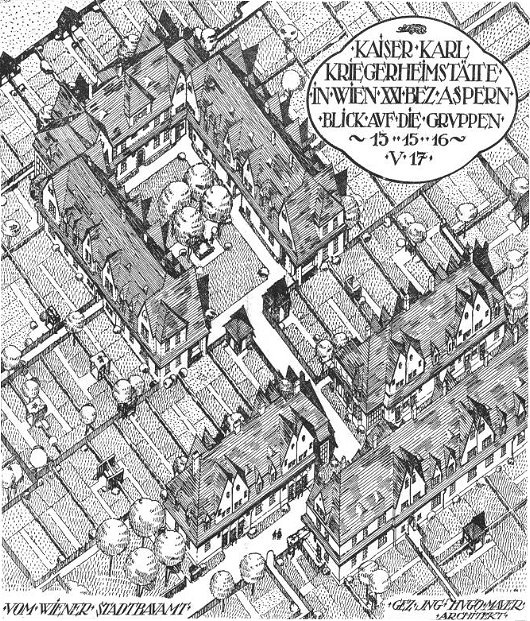
An unexecuted design. The architect later designed a number of housing projects during the First Austrian Republic.
Diary
Nothing ever happens in New York, or at least nothing when compared to Edinburgh, London, or Paris; this is my perpetual complaint. But when it rains, it pours, and so it was last night. Not only was it press day, the busiest day of the month-long cycle of creating each issue of The New Criterion, but then the evening beheld both “A Festive Evening Celebrating the Mission of the von Hildebrand Project” at the University Club and “The Reception and Dinner to Present the Medal for Heraldic Achievement” at the Racquet & Tennis Club. The simultaneous events were organized by the Dietrich von Hildebrand Legacy Project and the Committee on Heraldry of the New York Genealogical & Biographical Society, respectively.
A rarely-assembled fun crowd was promised at the von Hildebrand event, but nor was the presentation of the G&B’s medal a common occurrence (there have been only three awarded to date) so I simply resolved that I would do my best to attend both. (more…)
Search
Instagram: @andcusack
Click here for my Instagram photos.Most Recent Posts
- Amsterdam November 26, 2024
- Silver Jubilee November 21, 2024
- Articles of Note: 11 November 2024 November 11, 2024
- Why do you read? November 5, 2024
- India November 4, 2024
Most Recent Comments
- on The Catholic Apostolic Church, Edinburgh
- on Articles of Note: 11 November 2024
- on Articles of Note: 11 November 2024
- on Why do you read?
- on Why do you read?
- on University Nicknames in South Africa
- on The Situation at St Andrews
- on An Aldermanian Skyscraper
- on Equality
- on Rough Notes of Kinderhook
Book Wishlist
Monthly Archives
Categories

